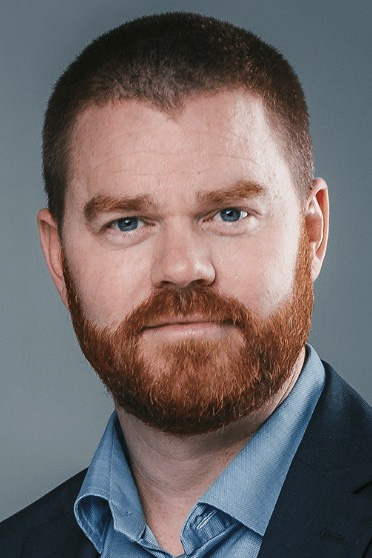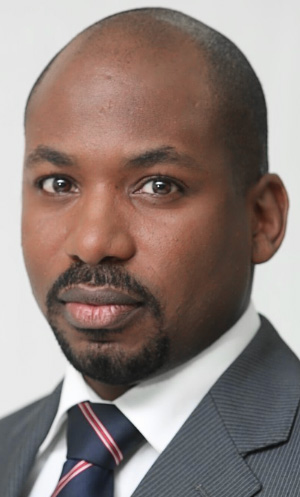

 The term Email Deliverability is used to describe how well a mail flow can reach its intended recipients. This has become a cornerstone concept when discussing quality metrics in the email industry and as such, it is important to understand how to measure it. Email Deliverability is considered to be affected by a mythical metric, the reputation of the sender, which is a measure of that sender behavior over time -- and the reactions of the recipients to his messages. more
The term Email Deliverability is used to describe how well a mail flow can reach its intended recipients. This has become a cornerstone concept when discussing quality metrics in the email industry and as such, it is important to understand how to measure it. Email Deliverability is considered to be affected by a mythical metric, the reputation of the sender, which is a measure of that sender behavior over time -- and the reactions of the recipients to his messages. more
 At a staggering $100 billion dollar valuation and reported 900 million users, Facebook represents a massive presence in the global economy. From an Internet infrastructure perspective, Facebook also ranks amongst the largest of the "hyper giants" generating a significant share of daily global Internet traffic. This blog explore Facebook's size in terms of its Internet traffic contribution. more
At a staggering $100 billion dollar valuation and reported 900 million users, Facebook represents a massive presence in the global economy. From an Internet infrastructure perspective, Facebook also ranks amongst the largest of the "hyper giants" generating a significant share of daily global Internet traffic. This blog explore Facebook's size in terms of its Internet traffic contribution. more
 A lot of the money being spent on broadband infrastructure today is trying to solve the digital divide, which I define as a technology gap where good broadband is available in some places but not everywhere. The technology divide can be as large as an entire county that doesn't have broadband or as small as a pocket of homes or apartment buildings in cities that got bypassed. more
A lot of the money being spent on broadband infrastructure today is trying to solve the digital divide, which I define as a technology gap where good broadband is available in some places but not everywhere. The technology divide can be as large as an entire county that doesn't have broadband or as small as a pocket of homes or apartment buildings in cities that got bypassed. more
 The Bug Bounty movement grew out a desire to recognize independent security researcher efforts in finding and disclosing bugs to the vendor. Over time the movement split into those that demanded to be compensated for the bugs they found and third-party organizations that sought to capitalize on intercepting knowledge of bugs before alerting the vulnerable vendor. Today, on a different front, new businesses have sprouted to manage bug bounties on behalf of a growing number of organizations new to the vulnerability disclosure space. more
The Bug Bounty movement grew out a desire to recognize independent security researcher efforts in finding and disclosing bugs to the vendor. Over time the movement split into those that demanded to be compensated for the bugs they found and third-party organizations that sought to capitalize on intercepting knowledge of bugs before alerting the vulnerable vendor. Today, on a different front, new businesses have sprouted to manage bug bounties on behalf of a growing number of organizations new to the vulnerability disclosure space. more
 Adjit Walia, a Global Technology Strategist at Deutsche Bank, suggested in a recent paper that it's in the best interest of U.S. tech companies to tackle the digital divide. He says that those companies rely on a computer-literate public and workforce and that they ought to take a small sliver of their earnings and invest in students today before they fall on the wrong side of the digital divide. more
Adjit Walia, a Global Technology Strategist at Deutsche Bank, suggested in a recent paper that it's in the best interest of U.S. tech companies to tackle the digital divide. He says that those companies rely on a computer-literate public and workforce and that they ought to take a small sliver of their earnings and invest in students today before they fall on the wrong side of the digital divide. more
 Ask ten people what privacy is, and you'll likely get twelve different answers. The reason for the disparity is that your feelings about privacy depend on context and your experience. Privacy is not a purely technical issue but a human one. Long before computers existed, people cared about and debated privacy. Future U.S. Supreme Court Justice Louis Brandeis defined it as "the right to be left alone" in 1890. Before the Web became a ubiquitous phenomenon, people primarily thought of privacy in terms of government intrusion. more
Ask ten people what privacy is, and you'll likely get twelve different answers. The reason for the disparity is that your feelings about privacy depend on context and your experience. Privacy is not a purely technical issue but a human one. Long before computers existed, people cared about and debated privacy. Future U.S. Supreme Court Justice Louis Brandeis defined it as "the right to be left alone" in 1890. Before the Web became a ubiquitous phenomenon, people primarily thought of privacy in terms of government intrusion. more
 These days you can hardly talk about Internet governance without hearing about security. DNSSEC is a hot issue, ICANN's new president is a cyber-security expert, and cyberattacks seem to be a daily occurrence.
These days you can hardly talk about Internet governance without hearing about security. DNSSEC is a hot issue, ICANN's new president is a cyber-security expert, and cyberattacks seem to be a daily occurrence.
This reflects a larger shift in US policy. Like the Bush administration before it, the Obama administration is making security a high priority for the US. Only now the emphasis is on security in cyberspace. The outlines of the new policy were published in the recent US Cyberspace Policy Review, which even recommends a cyber security office directly in the White House. more
 In Systemantics: How Systems Really Work and How They Fail, John Gall says: "A complex system that works is invariably found to have evolved from a simple system that worked. A complex system designed from scratch never works and cannot be patched up to make it work. You have to start over with a working simple system." In the software development world, this is called Gall's Law... more
In Systemantics: How Systems Really Work and How They Fail, John Gall says: "A complex system that works is invariably found to have evolved from a simple system that worked. A complex system designed from scratch never works and cannot be patched up to make it work. You have to start over with a working simple system." In the software development world, this is called Gall's Law... more
 In the fall of 2022, around 9,000 numeric domain names such as 0146.se, 0148.se, 0149.se, and so on were registered in the .SE zone. These domains were registered with two registrars, Register.eu and 1API. They had the same kind of SSL certificate, and there were other similarities among them that strongly suggested they were connected. All these domains were registered after September 1, 2022, but not on the same date... more
In the fall of 2022, around 9,000 numeric domain names such as 0146.se, 0148.se, 0149.se, and so on were registered in the .SE zone. These domains were registered with two registrars, Register.eu and 1API. They had the same kind of SSL certificate, and there were other similarities among them that strongly suggested they were connected. All these domains were registered after September 1, 2022, but not on the same date... more
 On 11 February, I participated in a discussion about the pending sale of PIR at American University Washington College of Law, appropriately titled, The Controversial Sale of the .ORG Registry: The Conversation We Should Be Having. It was great to have a balanced discussion, free of some of the emotions that have often made it hard to discern the realities of the transaction. Certain misapprehensions arose in the discussion that we lacked the time to explore fully, so I want to take those up here. more
On 11 February, I participated in a discussion about the pending sale of PIR at American University Washington College of Law, appropriately titled, The Controversial Sale of the .ORG Registry: The Conversation We Should Be Having. It was great to have a balanced discussion, free of some of the emotions that have often made it hard to discern the realities of the transaction. Certain misapprehensions arose in the discussion that we lacked the time to explore fully, so I want to take those up here. more
 The latest report from China's Ministry of Industry and Information Technology (MIIT) shows Huawei at the top of the list of 100 largest software companies in China. On reflection, that's not surprising. Half of Huawei's business is now phones, where chief rival Apple has long considered itself a software company. The great achievement of Huawei's phone division was to pull ahead of everyone in the quality of picture-taking. The hardware can be matched; Huawei's advantage comes from software. more
The latest report from China's Ministry of Industry and Information Technology (MIIT) shows Huawei at the top of the list of 100 largest software companies in China. On reflection, that's not surprising. Half of Huawei's business is now phones, where chief rival Apple has long considered itself a software company. The great achievement of Huawei's phone division was to pull ahead of everyone in the quality of picture-taking. The hardware can be matched; Huawei's advantage comes from software. more
 Private equity firm Ethos Capital's attempt to take control of .org, the Internet domain that's home to most of the world's non-profit and public-benefit organizations, has triggered an interesting crisis in Internet governance. The Internet Corporation for Assigned Names and Numbers, or ICANN, is the body responsible for regulating the global domain name industry. For the first time since oversight responsibility over ICANN was passed from the United States National Telecommunications and Information Administration... more
Private equity firm Ethos Capital's attempt to take control of .org, the Internet domain that's home to most of the world's non-profit and public-benefit organizations, has triggered an interesting crisis in Internet governance. The Internet Corporation for Assigned Names and Numbers, or ICANN, is the body responsible for regulating the global domain name industry. For the first time since oversight responsibility over ICANN was passed from the United States National Telecommunications and Information Administration... more
 Dinni Jain, the CEO of Google Fiber, posted a blog last week that talks about dramatically increasing the top speeds available on fiber. He says the specific announcement will come in the coming months to dramatically expand Google Fiber's gigabit offerings. The blog gives a hint at what might be coming. Included in the blog is a speed test from the home of a Google Fiber employee in Kansas City who is receiving 20.2 Gbps. more
Dinni Jain, the CEO of Google Fiber, posted a blog last week that talks about dramatically increasing the top speeds available on fiber. He says the specific announcement will come in the coming months to dramatically expand Google Fiber's gigabit offerings. The blog gives a hint at what might be coming. Included in the blog is a speed test from the home of a Google Fiber employee in Kansas City who is receiving 20.2 Gbps. more
The number of 'things' connected to the internet is already bypassing the number of people on the planet. This Internet of 'things' is changing the way we live and work: from the way food is grown and produced on farms through automated temperature and feeding controls, to the way we check prices and buy through connected terminals, to the vehicles we drive, the security cameras at work, and automated gates at the entrance. Connected 'things' are everywhere. All these 'things' are helping us to be more productive and efficient while also offering more and more convenience. more
 To prepare DNS security for a post-quantum future, Verisign and partners are testing new cryptographic strategies that balance security, performance, and feasibility, especially through the novel Merkle Tree Ladder mode for managing large signatures. more
To prepare DNS security for a post-quantum future, Verisign and partners are testing new cryptographic strategies that balance security, performance, and feasibility, especially through the novel Merkle Tree Ladder mode for managing large signatures. more
Sponsored byWhoisXML API

Sponsored byIPv4.Global

Sponsored byRadix

Sponsored byVerisign

Sponsored byCSC

Sponsored byDNIB.com

Sponsored byVerisign
